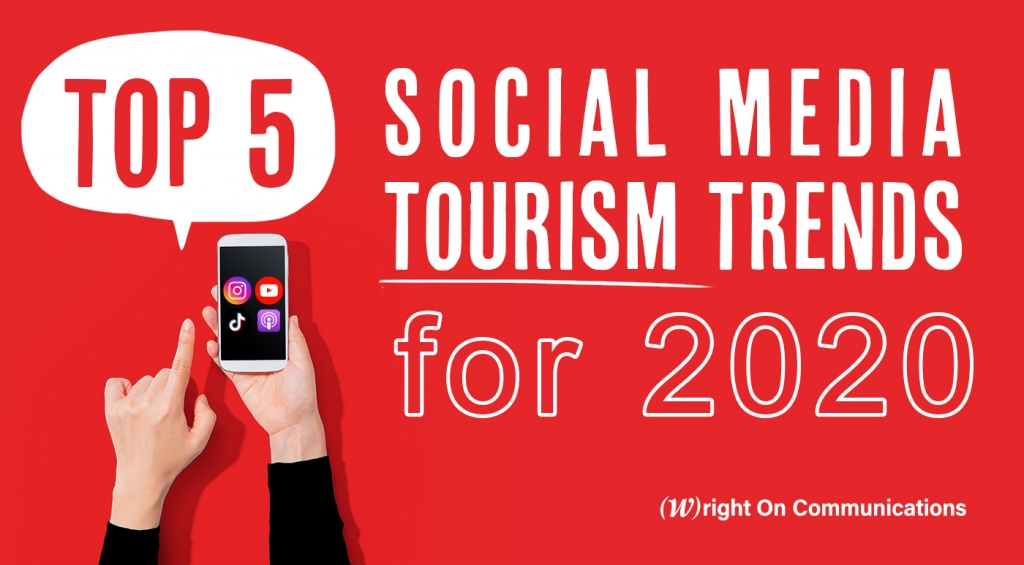What do hospitality PR teams need to know about social media tourism trends for 2020? First, it starts with storytelling—or, more appropriately, story “selling.”
The San Diego Tourism Authority recently hosted a some social media gurus for a workshop on trends to leverage to get your business and brand the most exposure. The following 5 trends and tips topped their lists.
1) The WHY behind the WHAT
Go beyond storytelling and start “story selling.” That’s the key to increasing consumer awareness of and interest in your brand.
Story selling more actively engages them in what you have to offer because it appeals to their emotional needs—their desire to relax in that peaceful place, sip that craft cocktail or take advantage of that once-in-a-lifetime experience. That’s how you effectively motivate consumers to go to your hotel, eat in your restaurant, or explore your attraction. You make them want it, whether or not they are actively seeking it out. Immerse your audience in the “where” with your social media images, but make sure that your images show them the “why.”
2) Instagram: Forge a consistent brand presence
Instagram Stories stand out as the most economical platform remaining in advertising. Plus, they offer the “Swipe Up” feature, which allows you to share a link and drive the consumer exactly where you want them to go next.
Perhaps you’ve found yourself watching story after IG story, not realizing how much time has passed. Capitalize on that behavior — with a consistent style.
It’s not as difficult as you might think. You need no more than seven slides at a time. Just keep these simple tips in mind as you capture and share Stories:
- Organization is key. Create a storyboard and timeline in advance. Plan exactly what you are going to post and the sequence or flow — with photos, hashtags, and phrases at the ready.
- Know your brand templates down to the font, color palette, and backgrounds, and integrate them as you plan your content days, weeks, or even months ahead. The moment consumers glimpse your images, they should immediately recognize your brand.
- Post a new Story only after the current one completes — and avoid sending followers from a serene beach to a noisy rollercoaster. Try to tell and share seamless Stories.
- Craft ads that feel like Stories. Even when you are promoting a product or experience, you can keep the content entertaining and authentic so that the consumer won’t feel that you are “selling” and will be more open to your message. Make the message so appealing that they just have to learn more.
3) TikTok: Know your audience
You can’t talk about social media tourism trends in 2020 and not mention TikTok. If your key demographic is 16- to 24-year-olds, this is the medium for you.
This is not the kind of platform where your CEO will deliver a simple message about your brand. Posts require a sense of humor and a creative tack.
What’s recommended in this space? Use an influencer to help sell your brand, and a creative team to help show the fun side of your business. You won’t engage here with your audience, but it will give you brand recognition. Proceed with caution for now; the analytics provided aren’t yet 100% intuitive for determining ROI.
4) YouTube: The return of a classic
A resurgence in YouTube? That’s right.
Create a video — but have a hook to grab the audience right away. Skip the intro music and opening credits. Grab their attention from the first instant.
Teach and tell. Make viewers care about you and the information only you can provide. And don’t focus on the subscribers; focus on views. The more views you have, the more exposure. When the video is over, there’s no need to sign off, or roll credits. Simply lead to the next video and keep the consumer on the platform and your channel. The more times your video leads to another video, the more exposure you get. YouTube’s goal is to keep the viewer on their platform, so don’t even bother saying “visit, comment or subscribe.” Your target users — if they’re engaged in what you have to offer — are smart enough to find you.
P.S. YouTube, like IG, offers Stories. The main difference: YouTube Stories stay for seven days — not just 24 hours. Talk about the power of longevity. Use this feature to drive home what you are about. Create that sense of engagement that will have the consumer wanting to see what else you have to offer.
5) Mindshare: The power of listening
Mindshare media is gaining significant traction, too. People can engage in podcasts while driving, exercising, or folding laundry. The average listener will be on a podcast for 26 minutes. What other platform gives you that level of extended exposure? Google is starting to show podcasts in search results.
Start a show based on your area of expertise: whether that’s wine pairings, the best restaurants in the area, or how to tell when the high tides are coming in. The visitor to your city will want as much knowledge as they can get, so be the one giving it to them. Not to mention the platform is relatively inexpensive to use and an easy way to gain a great ROI.
Look at your next social media campaign: Have you hit all of these trends? Are you organizing content ahead of time? Are you engaging the consumer in a way that taps into their wants? Go outside of your comfort zone and try a different platform rather than relying on what you’ve used in the past. The only thing constant is change, so take this opportunity to see how these trends can work best for you. Remember to not just story tell, story SELL.
By Licia Walsworth — Communications Strategist
















